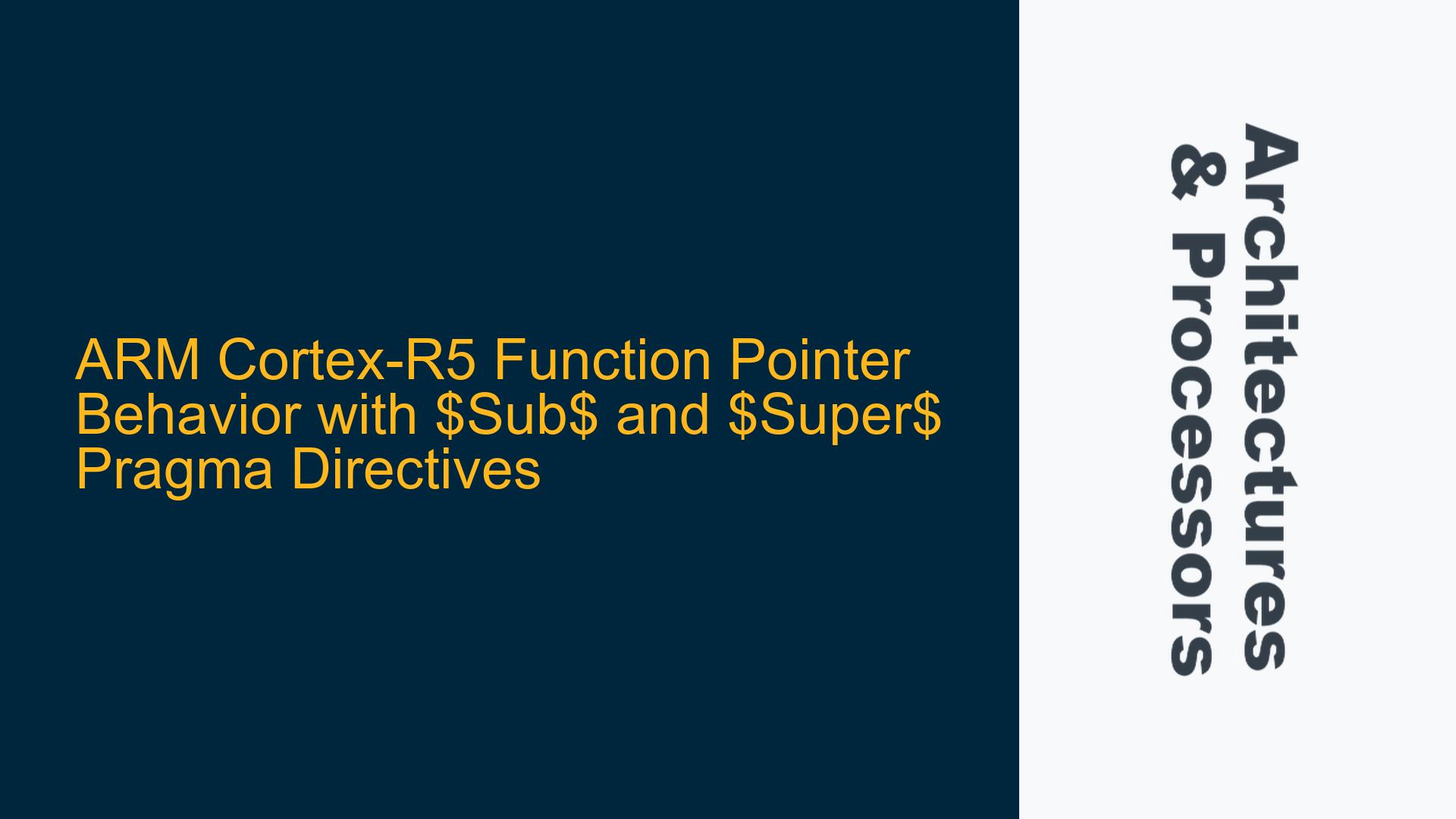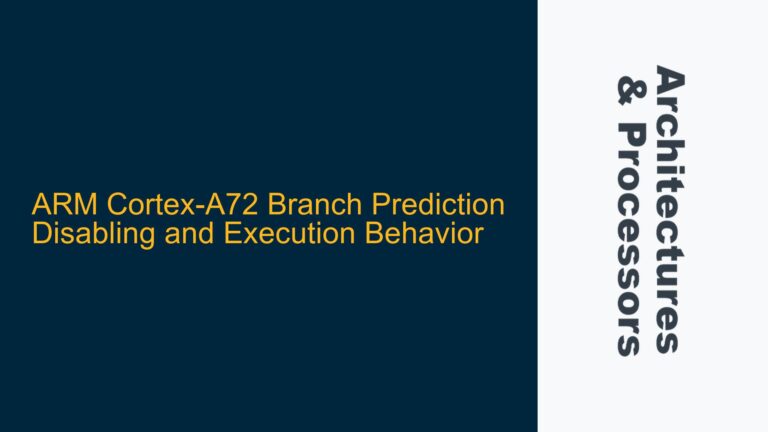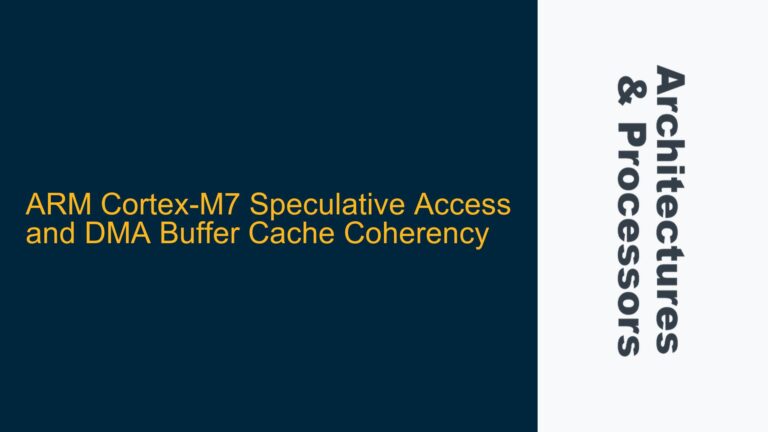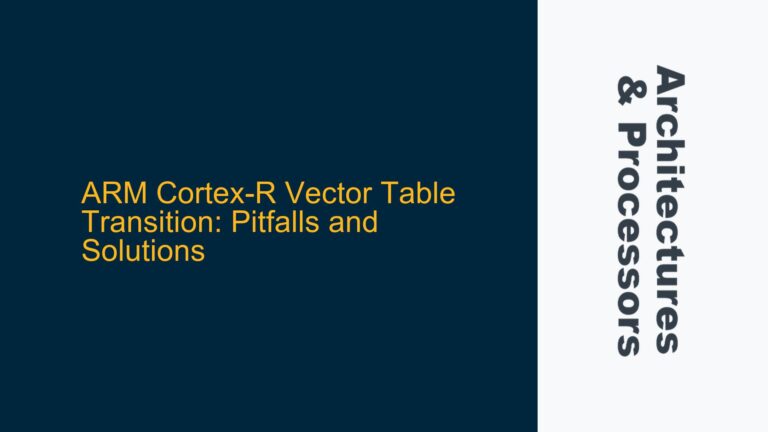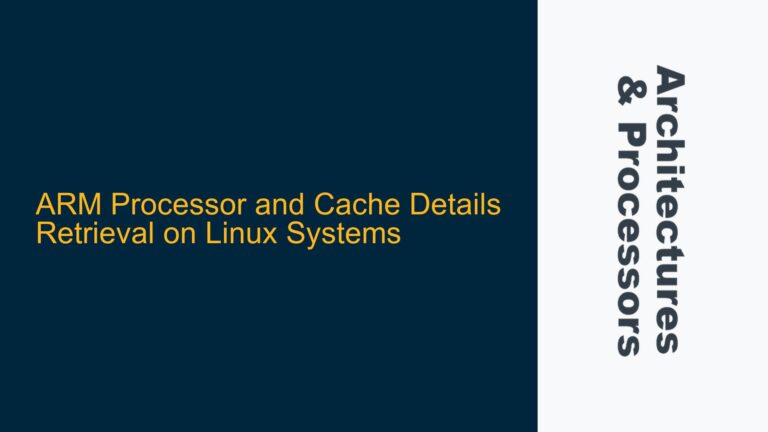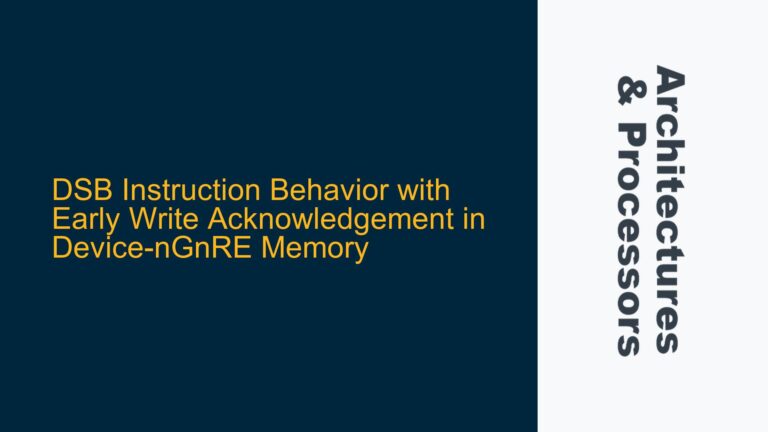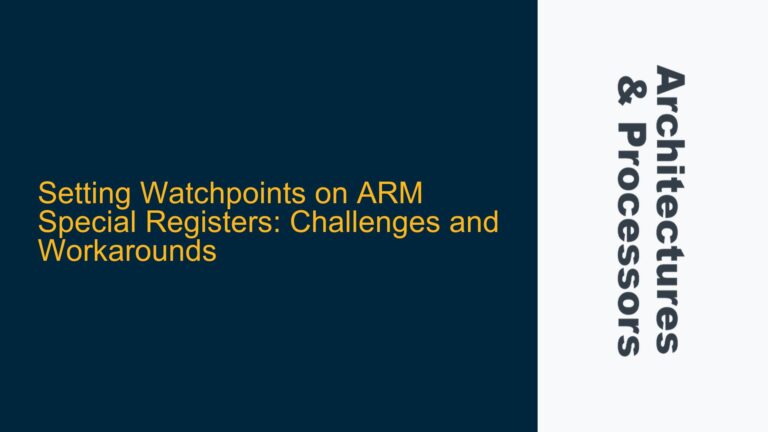ARM Cortex-R5 Function Pointer Resolution with $Sub$ and $Super$ Pragmas
The issue revolves around the behavior of function pointers in the ARM Cortex-R5 architecture when using the ARM Compiler (armcc) version 5.01, specifically in the context of the $Sub$ and $Super$ pragma directives. These directives are used to override or extend functions in embedded systems, allowing developers to inject additional functionality before or after the original function execution. However, the observed behavior indicates inconsistencies in how function pointers are resolved when these pragmas are applied, particularly when mixing ARM and Thumb instruction sets.
The core problem manifests when assigning function pointers to a task structure. Depending on the combination of pragmas (#pragma arm or #pragma thumb) applied to the function and the calling context, the function pointer may resolve to either the original function (func0) or its overridden version ($Sub$func0). This inconsistency can lead to unexpected runtime behavior, especially in systems where function pointer resolution is critical for task scheduling or dynamic function dispatching.
The assembly code generated by the compiler reveals that the function pointer resolution is influenced by the instruction set mode (ARM or Thumb) of both the function and the context where the function pointer is assigned. For example, when nextfunc() is compiled in ARM mode and func0 is compiled in Thumb mode, the function pointer resolves to $Sub$func0. Conversely, if both are compiled in the same mode, the function pointer resolves to the original func0. This behavior suggests that the compiler’s handling of function pointers is sensitive to the instruction set mode, which can lead to subtle bugs if not properly understood and managed.
Instruction Set Mode Sensitivity and Pragma Directive Interaction
The root cause of the observed behavior lies in the interaction between the ARM and Thumb instruction sets and the $Sub$ and $Super$ pragma directives. The ARM Cortex-R5 processor supports both ARM and Thumb instruction sets, and the compiler generates different code depending on the selected mode. The $Sub$ and $Super$ pragmas introduce additional complexity by creating overridden versions of functions, which are treated as separate entities by the compiler.
When a function is overridden using $Sub$, the compiler generates a new function that calls the original function ($Super$) after performing any additional operations. However, the function pointer resolution mechanism does not consistently account for the overridden function when the instruction set mode changes. This is particularly evident in the assembly code, where the function pointer assignment (Next_Task.func = func0) generates different instructions depending on the pragma settings.
For instance, when nextfunc() is compiled in ARM mode and func0 is compiled in Thumb mode, the compiler generates an ADR instruction to load the address of func0 with an offset of 1 (indicating Thumb mode). However, this address does not account for the overridden $Sub$func0, leading to the function pointer resolving to the original func0. Conversely, when both nextfunc() and func0 are compiled in the same mode, the function pointer resolves correctly to $Sub$func0.
This behavior is further complicated by the fact that the $Sub$ and $Super$ pragmas are not explicitly designed to handle mixed instruction set modes. The compiler’s internal logic for function pointer resolution does not fully account for the interaction between these pragmas and the instruction set mode, leading to inconsistent behavior.
Ensuring Consistent Function Pointer Resolution with Mixed Instruction Sets
To address the inconsistent function pointer resolution, developers must carefully manage the interaction between the $Sub$ and $Super$ pragmas and the instruction set mode. The following steps outline a systematic approach to ensure consistent behavior:
-
Unified Instruction Set Mode: Ensure that all functions and their overridden versions (
$Sub$and$Super$) are compiled in the same instruction set mode. This eliminates the possibility of mixed-mode issues and ensures consistent function pointer resolution. For example, iffunc0is compiled in Thumb mode, ensure thatnextfunc()and any other functions that referencefunc0are also compiled in Thumb mode. -
Explicit Function Pointer Assignment: Use explicit function pointer assignments to avoid relying on the compiler’s implicit resolution logic. For example, instead of directly assigning
Next_Task.func = func0, use a helper function that explicitly resolves the function pointer based on the desired behavior. This approach provides greater control over the function pointer resolution process and reduces the risk of inconsistencies. -
Compiler-Specific Pragmas: Leverage compiler-specific pragmas or attributes to enforce consistent behavior. For example, the
__attribute__((always_inline))attribute can be used to inline the overridden function, ensuring that the function pointer resolves correctly regardless of the instruction set mode. Additionally, the#pragma armand#pragma thumbdirectives can be used to explicitly set the instruction set mode for specific functions or code blocks. -
Runtime Validation: Implement runtime validation to verify that function pointers resolve to the expected functions. This can be achieved by comparing the function pointer to the expected address of the overridden function (
$Sub$func0) and logging or handling any discrepancies. Runtime validation provides an additional layer of safety and helps identify issues that may not be apparent during compilation. -
Compiler Updates and Documentation: Stay informed about compiler updates and documentation related to the
$Sub$and$Super$pragmas. Compiler vendors may release updates that address known issues or provide additional guidance on using these pragmas in mixed instruction set environments. Regularly reviewing the compiler documentation ensures that developers are aware of any changes or best practices that may impact function pointer resolution.
By following these steps, developers can mitigate the risks associated with inconsistent function pointer resolution and ensure that their code behaves as expected in mixed instruction set environments. The key is to maintain consistency in the instruction set mode and explicitly manage function pointer assignments to avoid relying on the compiler’s implicit resolution logic.
Detailed Analysis of Assembly Code and Pragma Impact
To further understand the behavior, let’s analyze the assembly code generated by the compiler under different pragma settings. The following table summarizes the observed behavior based on the pragma combinations:
nextfunc() Pragma |
func0 Pragma |
Function Pointer Resolution |
|---|---|---|
#pragma arm |
#pragma thumb |
Resolves to $Sub$func0 |
#pragma arm |
#pragma arm |
Resolves to func0 |
#pragma thumb |
#pragma arm |
Resolves to $Sub$func0 |
#pragma thumb |
#pragma thumb |
Resolves to func0 |
The table highlights the sensitivity of function pointer resolution to the instruction set mode. When nextfunc() and func0 are compiled in different modes, the function pointer resolves to $Sub$func0. However, when both are compiled in the same mode, the function pointer resolves to the original func0. This behavior underscores the importance of maintaining consistency in the instruction set mode when using $Sub$ and $Super$ pragmas.
The assembly code provides further insights into the compiler’s behavior. When nextfunc() is compiled in ARM mode and func0 is compiled in Thumb mode, the compiler generates the following instructions:
ADR r0, func0 + 1
LDR r1, |L5.12064|
STR r0, [r1, #0] ; Next_Task
The ADR instruction loads the address of func0 with an offset of 1, indicating Thumb mode. However, this address does not account for the overridden $Sub$func0, leading to the function pointer resolving to the original func0.
Conversely, when both nextfunc() and func0 are compiled in the same mode, the compiler generates the following instructions:
LDR r0, |L6.380|
STR r0, [r1, #0] ; Next_Task
In this case, the LDR instruction directly loads the address of func0 without any offset, resulting in the function pointer resolving to the original func0.
The assembly code analysis confirms that the compiler’s handling of function pointers is influenced by the instruction set mode and the pragma settings. By understanding this behavior, developers can take proactive steps to ensure consistent function pointer resolution and avoid potential runtime issues.
Conclusion
The interaction between the $Sub$ and $Super$ pragmas and the instruction set mode in the ARM Cortex-R5 architecture introduces complexities in function pointer resolution. The observed behavior highlights the importance of maintaining consistency in the instruction set mode and explicitly managing function pointer assignments to avoid relying on the compiler’s implicit resolution logic. By following the outlined steps and understanding the underlying assembly code, developers can ensure consistent behavior and mitigate the risks associated with mixed instruction set environments.
